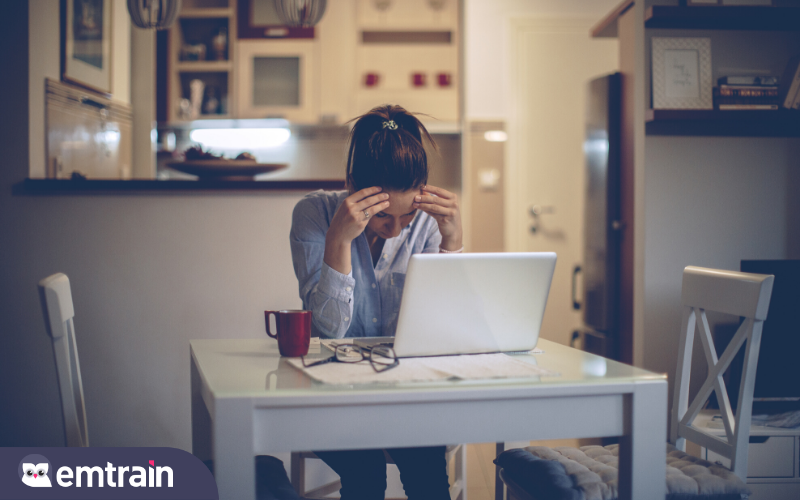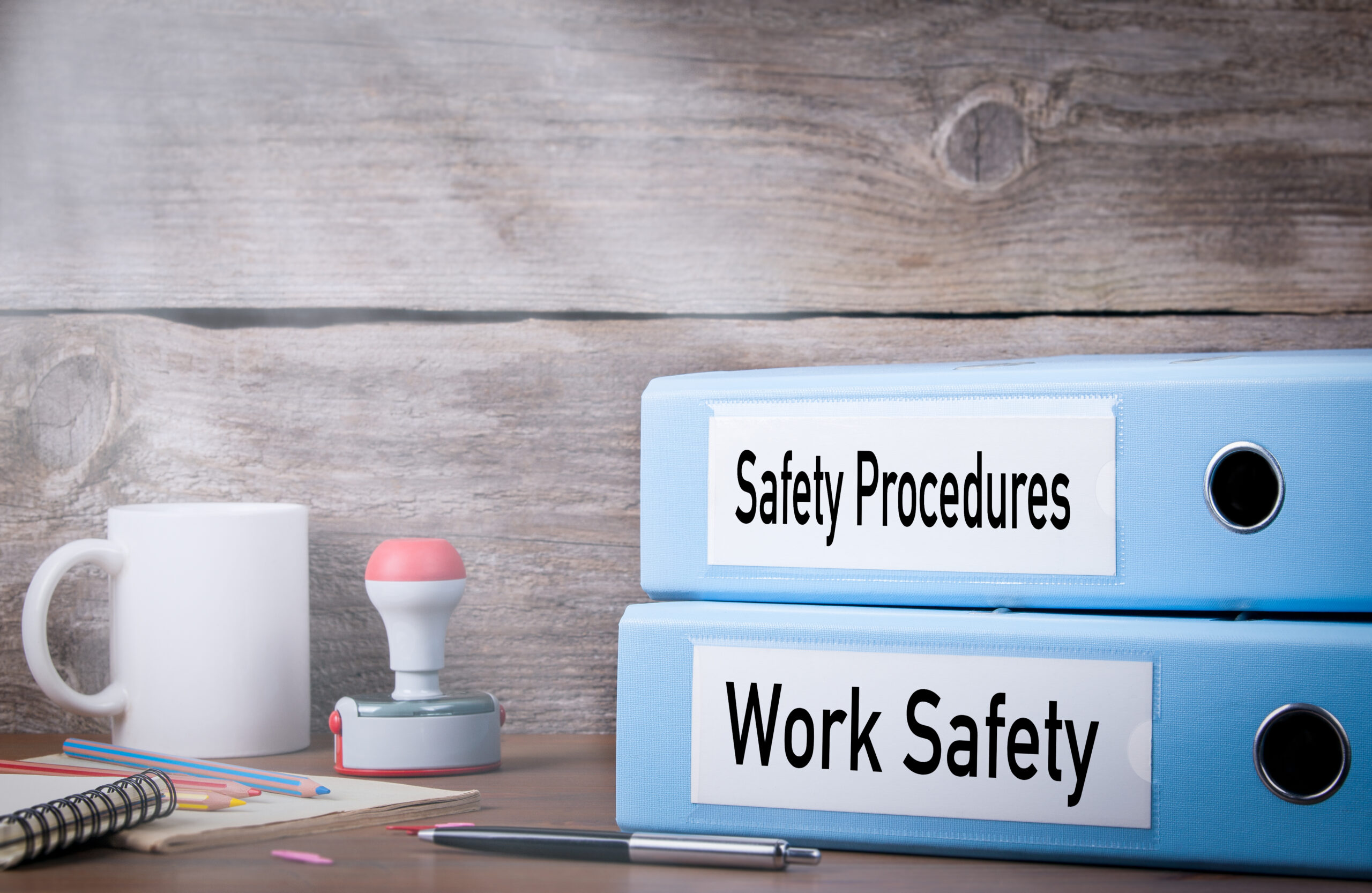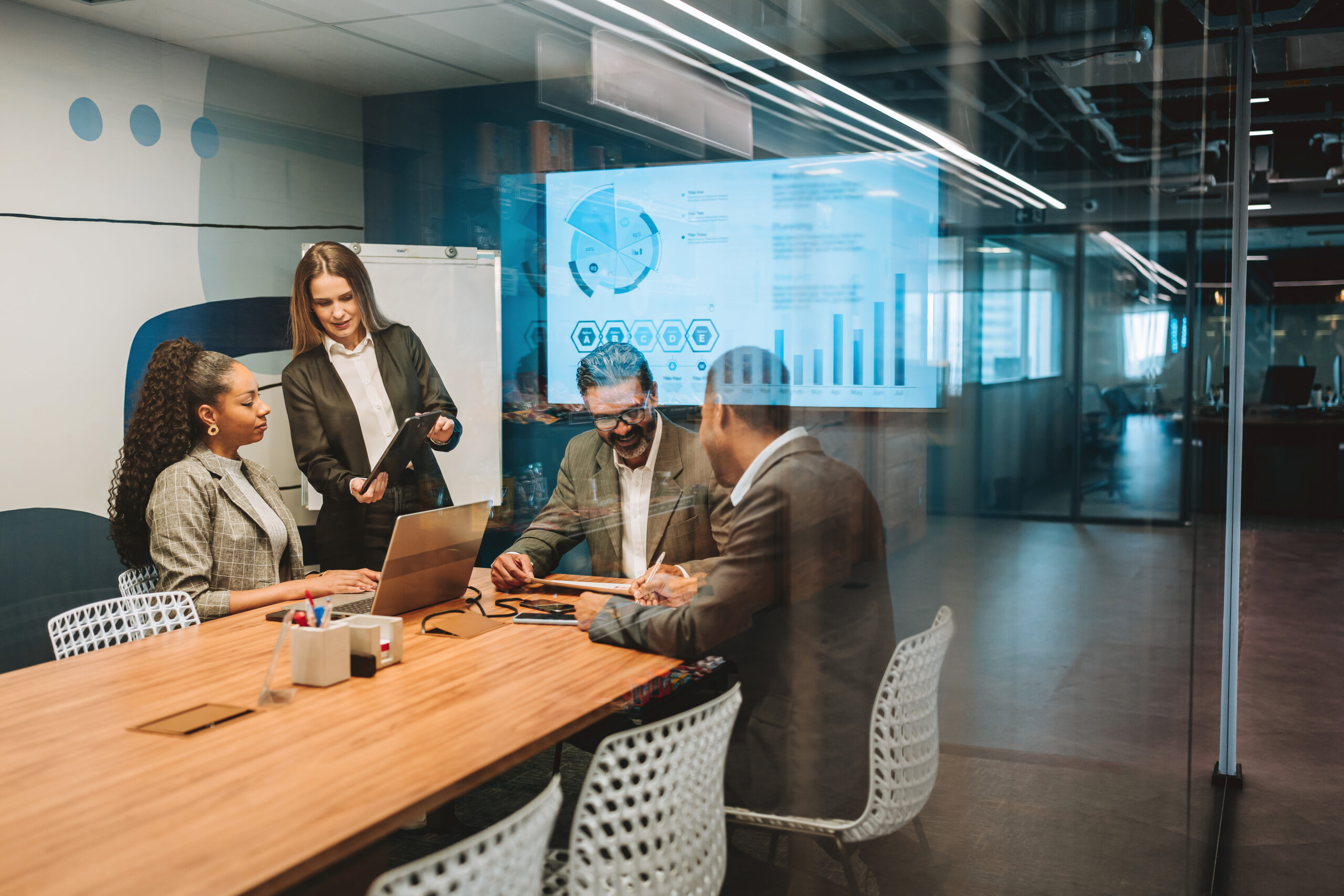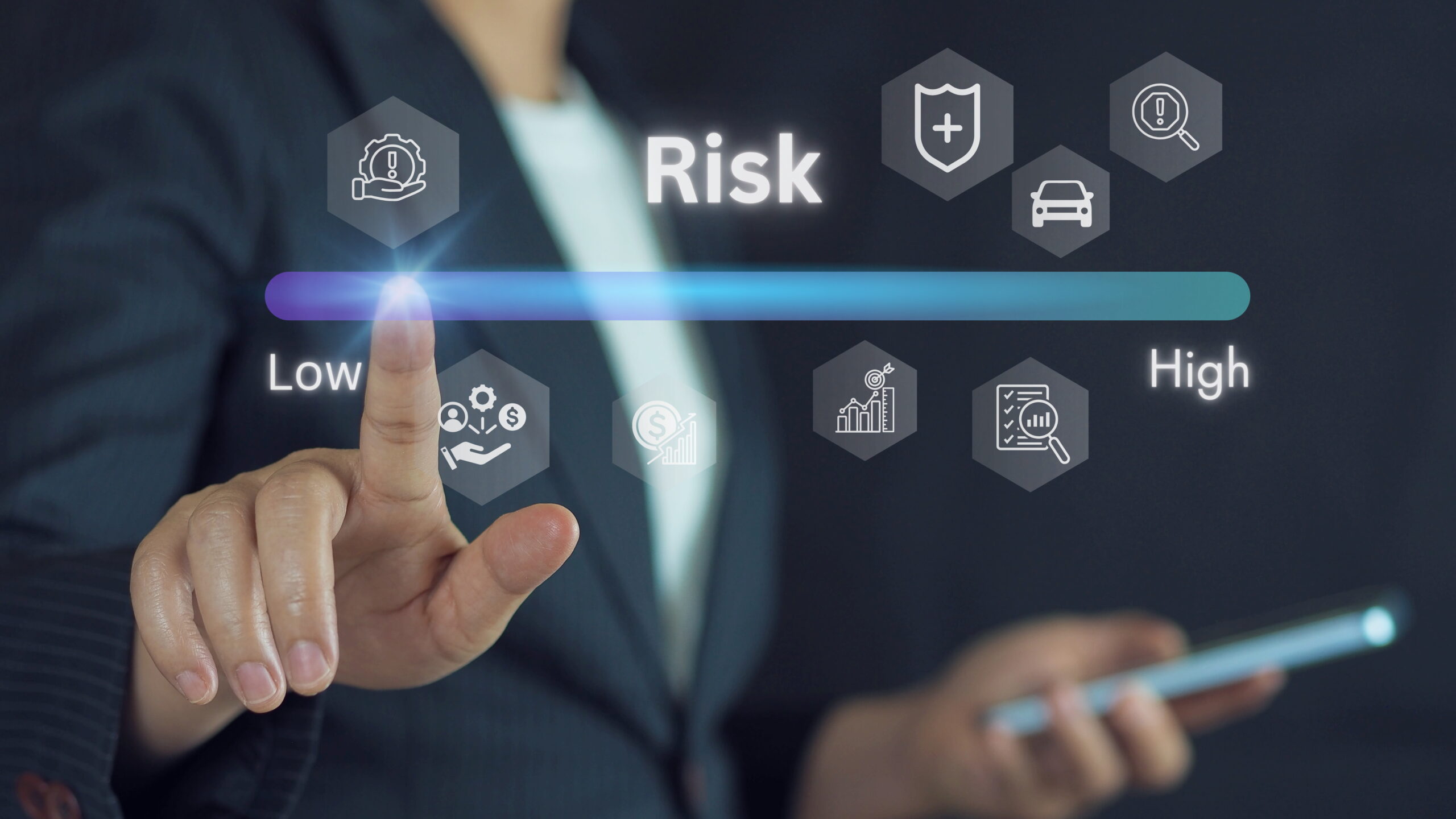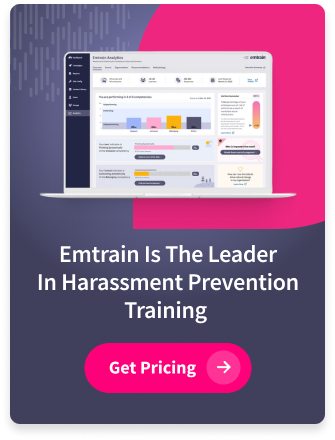Before COVID-19 emerged and shelter in place took effect, workplace anxiety very much existed. Workplace anxiety can be triggered by difficult situations such as “dealing with problems, setting and meeting deadlines, maintaining personal relationships, managing staff, participating in meetings, and making presentations,” according to a national survey on anxiety in the workforce.
What is Anxiety?
About 40 million adults suffer from an anxiety disorder; that’s nearly 20% of the adult population. And these are just reported cases. Medical News Today explains anxiety as an “ever-present uninvited guest; in our circle of friends, among family members, and communities at large.” For some of us, anxiety comes and goes, but for most Americans, it’s consistent and has its own routine. The symptoms of anxiety are both physical and mental: heavy breathing, shortness of breath, racing heartbeat, fatigue, sweating, feeling sick, restlessness, or irritability, to name a few. Anxiety hits even at the most unexpected moments in our lives, and it can be life-threatening.
Mental health gets in the way of productivity. In a survey by Mind Share Partners, more than 60% of workers say their mental health affects their productivity. Furthermore, the World Health Organization estimated that depression and anxiety cost the global economy $1 trillion per year in lost productivity. While confirmed anxiety disorder cases are unknown since the pandemic hit, it’d be no surprise if the number of anxiety cases increases and productivity continues to decrease.
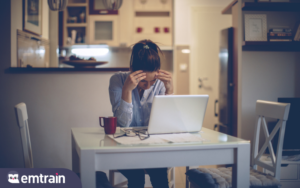
Workplace anxiety increased during the pandemic due to many unknowns from job security, getting back to normal life, work/ home life balance, and just processing all the societal events that took place. Companies have raised awareness and coping methods to ease workplace anxiety by offering mental health days, frequent check-ins between employees and managers, and simply raising awareness around anxiety.
How COVID-19 Further Impacts Workplace Anxiety
Today, most Americans are dealing with another wave of anxiety triggered by COVID-19 and its negative impact on our daily lives. As millions of employees are suddenly working from home, more employees are dealing with higher levels of stress and work anxiety. Not to mention the constant fear and worrying about contracting the virus, and potentially passing it on to household family members. Coronavirus anxiety is a thing and can threaten everyone’s mental health.
However, during this pandemic, we’re not practicing traditional “working from home.” Real work from home practice requires a dedicated office space without any distractions. Today, most of us are converting dining tables and sofas into workspaces (and school spaces), taking care of children, or an older adult, while maintaining the 9 to 5 job, attending Zoom calls, and actually getting work done. Since we’re all remotely connected, most employees tend to check and respond to emails and Slack messages throughout the evening. They fear that if they don’t respond to their managers or team members, they may be viewed as unproductive. Ultimately, causing more stress and anxiety, leading to low-quality work.
Economic uncertainty also adds another level of anxiety to an individual. Many employees may fear the loss of their job or their partner at home may have lost a job or furloughed during the pandemic. As a result, they may be the only breadwinner of the household.
How HR Leaders Can Impact Their Employee’s Mental Health
The mental health of your workforce is far more critical today than it ever was before. As HR and Culture Leaders, it’s your responsibility to educate CEOs and Executives on how they can help ease the anxiety of their teams.
Many things can be done to ease workplace anxiety in employees and their mental health. Start by talking about mental health in the workplace, letting the workforce know that you and the executive team understand the severity of the situation and that everyone’s circumstances are different. At Emtrain, we practice different ways to help ease the anxiety of our teams, such as continuous and constant communication, virtual activities, creating interest groups, creating work from home schedules, and much more.
During challenging times like this, storytelling also helps. Employees who are open to talk about their anxiety are encouraged to share tips on what’s working for them. Real-life stories and best practices can help at least one employee, which can make all the difference. Employees don’t need to make a presentation. Still, as the HR and Culture Leader, you can share their tips anonymously to the workforce.
According to a Forbes article, “Dr. Alice Boyes [says] there is certainly a silver lining to managing anxiety. Because people with anxiety struggle with loss of control, they’re more likely to have a plan B when things go wrong, follow up with people when things don’t feel right and lead with positivity despite “OK” outcomes because they expected the worst. Additionally, research has found that anxiety is positively correlated with intelligence.”
Anxiety is not a setback; it’s part of who individuals are and how we cope with it and manage it. As said before, we’re all different, and our circumstances differ from one another. The best that we can do right now is to support each other and be an open ear when someone needs to talk, whether it’s a simple check-in on Slack, or scheduling a one-on-one Zoom call (video on or off). When the pandemic is over, let’s continue to talk about mental health in the workplace and how we can best support each other.
Download the tipsheet: 8 Ways to Ease Workplace Anxiety
FAQs
What specific strategies can employees use to manage workplace anxiety on their own?
To manage workplace anxiety on their own, employees can practice mindfulness techniques such as meditation or deep breathing exercises. Establishing a consistent routine, setting boundaries between work and personal life, and seeking support from colleagues or mental health professionals can also be beneficial.
How can employers measure the effectiveness of the mental health initiatives they implement?
Employers can measure the effectiveness of mental health initiatives by conducting regular surveys to gather employee feedback, monitoring productivity and absenteeism rates, and analyzing employee turnover data. Additionally, creating focus groups or holding one-on-one meetings can provide qualitative insights into the initiatives’ impact.
What long-term impacts of pandemic-induced workplace anxiety might persist even after returning to normal work conditions?
Pandemic-induced workplace anxiety may persist due to ongoing uncertainties and changes in work environments. Employers should prepare for potential long-term impacts by continuing flexible work arrangements, offering ongoing mental health support, and fostering a culture of open communication. It’s important to acknowledge that some employees may need extended periods to adjust and that continuous support and resources will be essential for their well-being.
